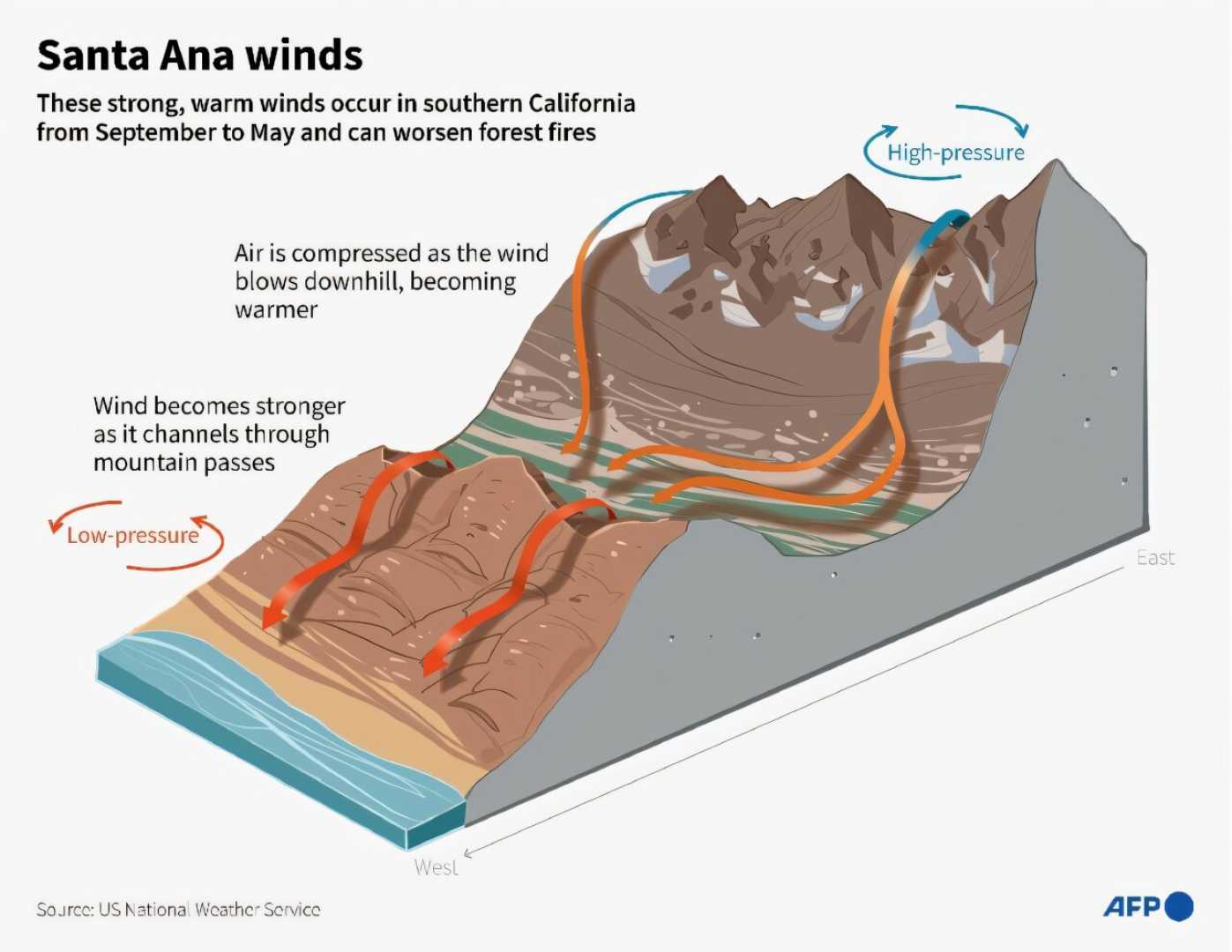News
Santa Ana Winds Fuel California Wildfires, Threaten Air Quality

LOS ANGELES (KABC) — Southern California is grappling with a dual crisis as raging wildfires, fueled by the return of the Santa Ana winds, continue to devastate communities and threaten air quality across the region. The fires, which began last week, have already burned over 40,000 acres, with two major blazes still uncontrolled as of Monday.
The Santa Ana winds, known for their hot, dry nature, have been a key factor in the rapid spread of the fires. Last week, wind speeds reached up to 99 mph, turning small sparks into infernos that destroyed entire neighborhoods. This week, the winds have returned, with gusts expected to reach 65 mph, raising fears of further destruction and complicating firefighting efforts.
“Critical fire weather is expected, so PLEASE have multiple ways of getting notifications in case of new fires,” the National Weather Service (NWS) Los Angeles warned. Fire behavior analyst Dennis Burns emphasized that Tuesday would be the most dangerous day, with the winds threatening to reverse progress made in containing the fires.
Health officials are also warning residents about the lingering dangers of poor air quality, even in areas where the air quality index appears good. “The pollutant we’re most concerned with is PM 2.5,” said resource advisor Jen Croft. “Particulate matter 2.5 is 70 percent smaller than the diameter of your hair. It goes down into your lungs, scratches things up, and makes things uncomfortable for you.”
Residents are advised to wear N-95 masks and limit outdoor activities, as hazardous materials like lead, arsenic, and asbestos, released from burned structures, could still be present in the air. “If you are wearing a loose-fitted or fabric mask, you are not being protected,” Croft added.
Governor Gavin Newsom has urged residents to remain vigilant and ready to evacuate if necessary. Fire departments have pre-positioned engines and deployed additional personnel to high-risk areas in anticipation of the worsening conditions.
The combination of extreme weather, prolonged drought, and the impacts of climate change has created a tinderbox environment in Southern California. With no significant rainfall in over eight months, the region remains highly vulnerable to wildfires, and the return of the Santa Ana winds only exacerbates the crisis.












